EXPLORING THE TOP OF THE WORLD
Arctic Watch
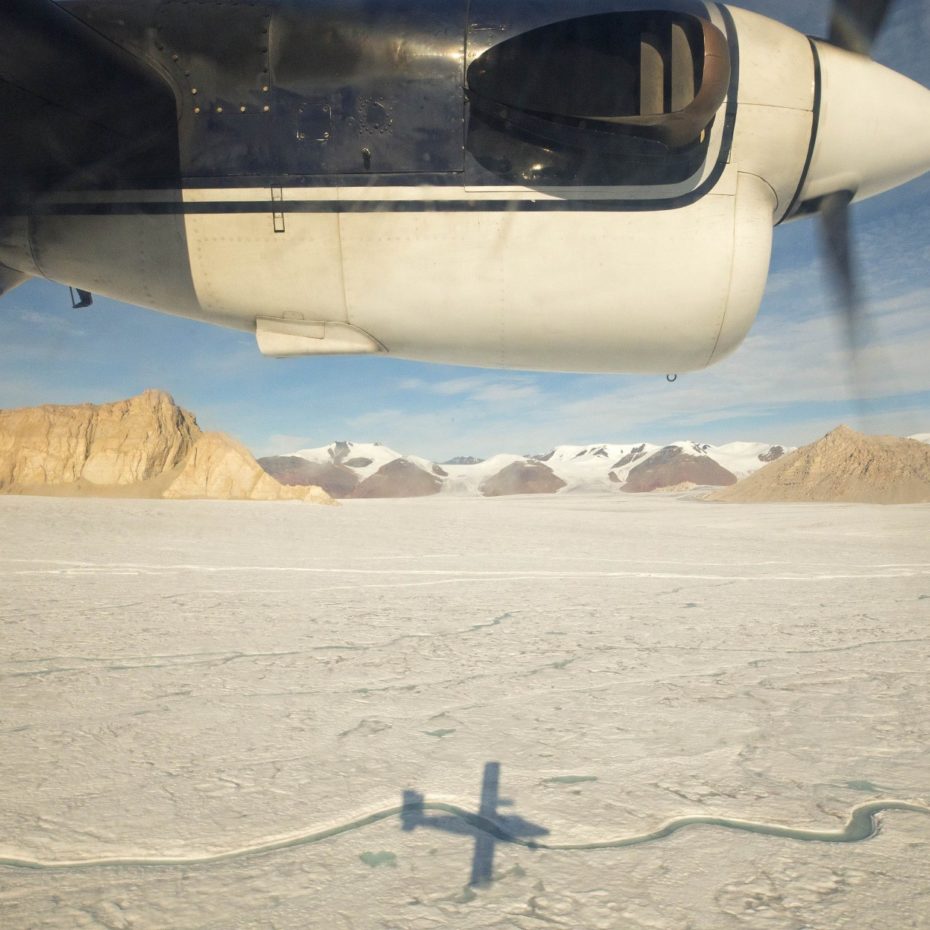
Arctic Watch
August 27, 2018 | Arctic Watch
A dream trip across the high Arctic for one guest- Arctic Watch, Ellesmere Island, Greenland and Axel Heiberg.
Under the swirling skies of a retreating storm, the engines of a Twin Otter come to life. Duffels of camping equipment and fishing gear are tossed onto the gravel airstrip at Arctic Watch. A patch of blue breaks the otherwise grey cloud cover and the promise of clearing skies stirs the lodge to life. Richard and Nansen Weber alongside pilots Mike Yorston and Cody Brandl prepare for a multi-day tour of the High Arctic. Staging from Arctic Watch, the private trip, guided by Richard Weber, is set to fly around the Arctic stopping at half-a-dozen locations in Canada and Greenland. After careening down the airstrip at Arctic Watch, Mike points the nose of the plane due north. Over several days, the excursion will maintain its northern trajectory for over one-thousand kilometers to the northernmost point of land in the Canadian Arctic.

First, a stop on Axel Heiberg Island. Disembarking from the plane the hillsides are striped with black bands of what appear to be veins of charred wood. Aware that the High Arctic is void of most plant life, the presence of wood promotes a heightened sense of curiosity. Dating as far back as 45 million years, the charred wood is, in fact, an ancient mummified forest. Perfectly preserved, the massive stumps of gnarled Dawn Redwood trees (Metasequoia) reveal clues to a lush world when the Arctic was warm and hospitable. Millions of years old, the mummified wood still burns bright and the grain and bark of ancient trees is unmistakable.
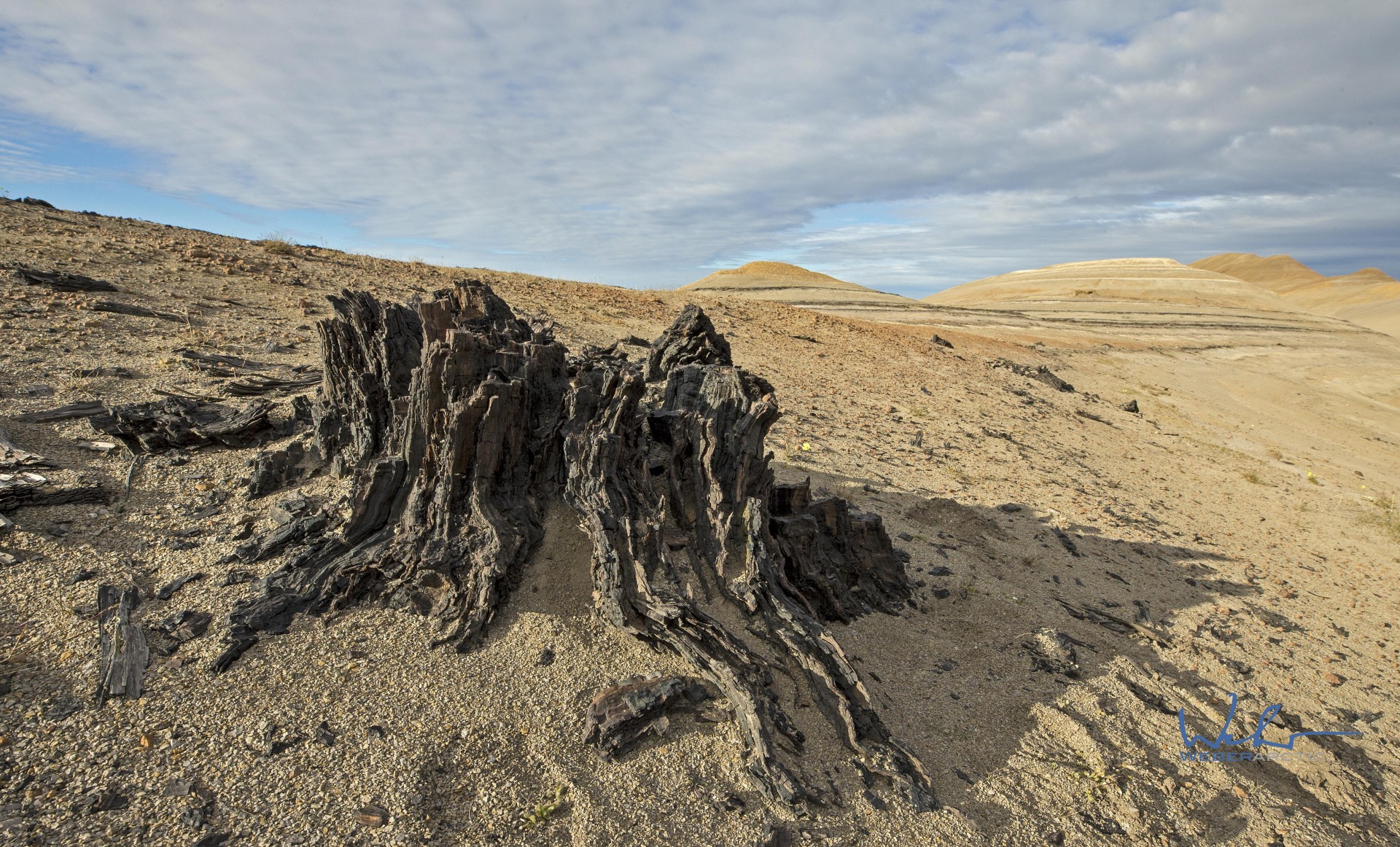
Returning to the air, it is only a short flight before Lake Buchannan comes into view. Glacial blue, the lake sits nestled between looming peaks of black shale. The scenery is mesmerizing as we circle and make our descent to the short gravel landing. Thought to be the second most northerly char run at nearly 80 degrees north, our fly rods are close at hand. Casting bright pink and orange streamers into the gin-clear river, we catch fish right from the door of the plane. Our fly rods slice through the calm skies and an unhurried atmosphere sweeps over the shoreline as we fish late into the evening under the midnight sun.
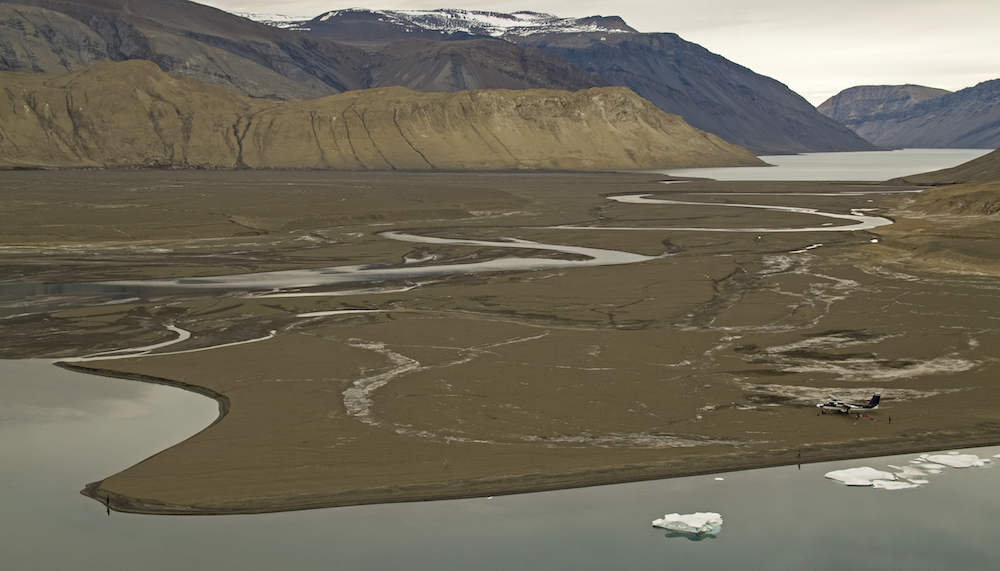
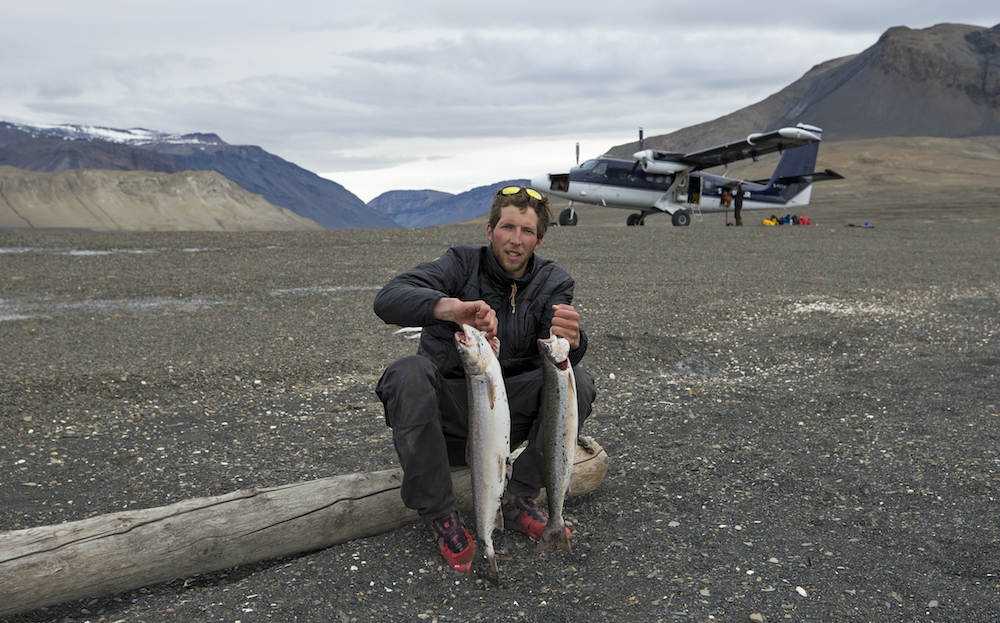
To cap off a full day of adventure, we return to the Twin Otter for one last flight to Eureka where we rest our heads and enjoy the hospitality of the remote weather station.
Rising early the following morning, our sights are set on Ward Hunt Island, the most northerly point in Canada and the starting point of most major North Pole expeditions. Flying along the coast of Ellesmere Island, a continuous chain of mountains, glaciers and cracking icebergs fill the plane’s windows for the two-and-a-half-hour flight from Eureka to Ward Hunt. The five hundred kilometer flight above the empty and inhospitable landscape of rock and ice is a humbling experience.
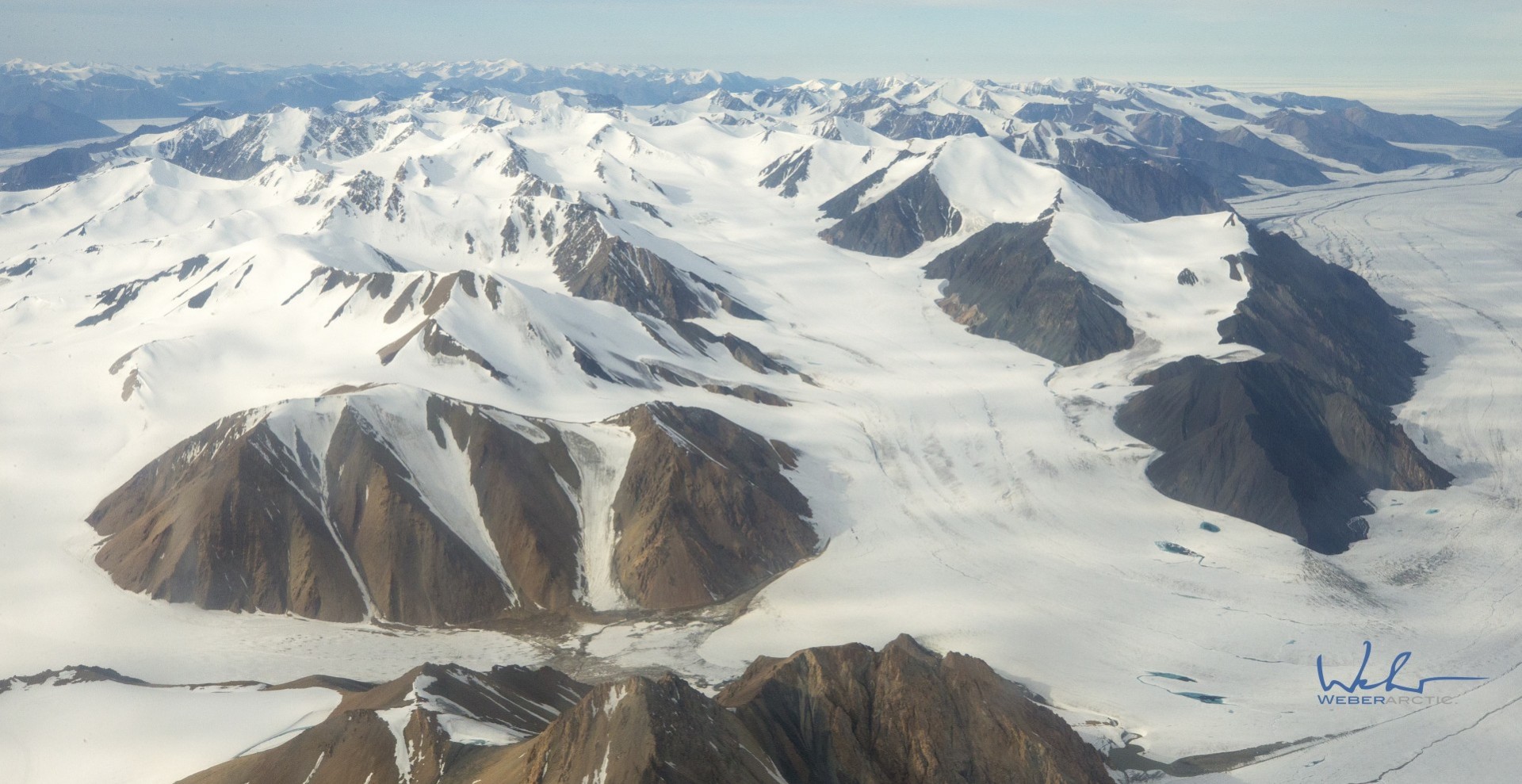
Part of Quttinirpaaq National Park, meaning “top of the world” in Inuktitut, Ward Hunt Island is the end of the road for most. Beyond the gently sloping ice shelf, pack ice stretches all the way to the North Pole. This is Richard’s eighth time to Ward Hunt. But on this occasion, unencumbered from the hundreds of pounds of food and equipment necessary for a North Pole expedition. A place steeped with meaning, Ward Hunt is the beacon of land to return to after almost three months living on the ice.
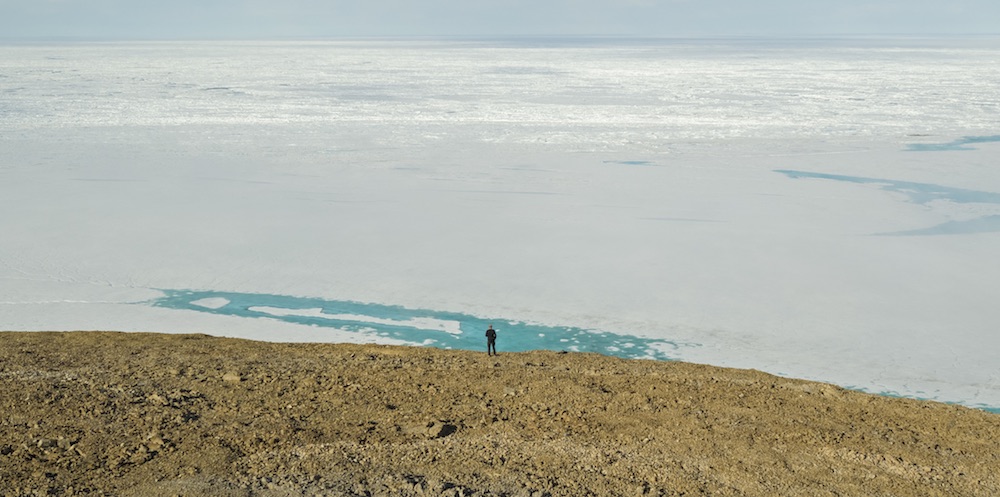
Fewer than 250 people have reached the North Pole by land, ever. In comparison, in 2017 alone, over six hundred people summited Mount Everest. In the last two decades, Arctic travel is increasingly becoming more challenging. The ice shelf at Ward Hunt which once stretched over six kilometers to the north receded significantly and the window for safe travel over the frozen Arctic Ocean is narrowing. Dragging sleds over the convoluted route of smashed pack ice and pressured ice ridges is not only cumbersome but also perilous as the thaw approaches. Richard is among just a handful of people to have completed multiple successful North Pole expeditions.
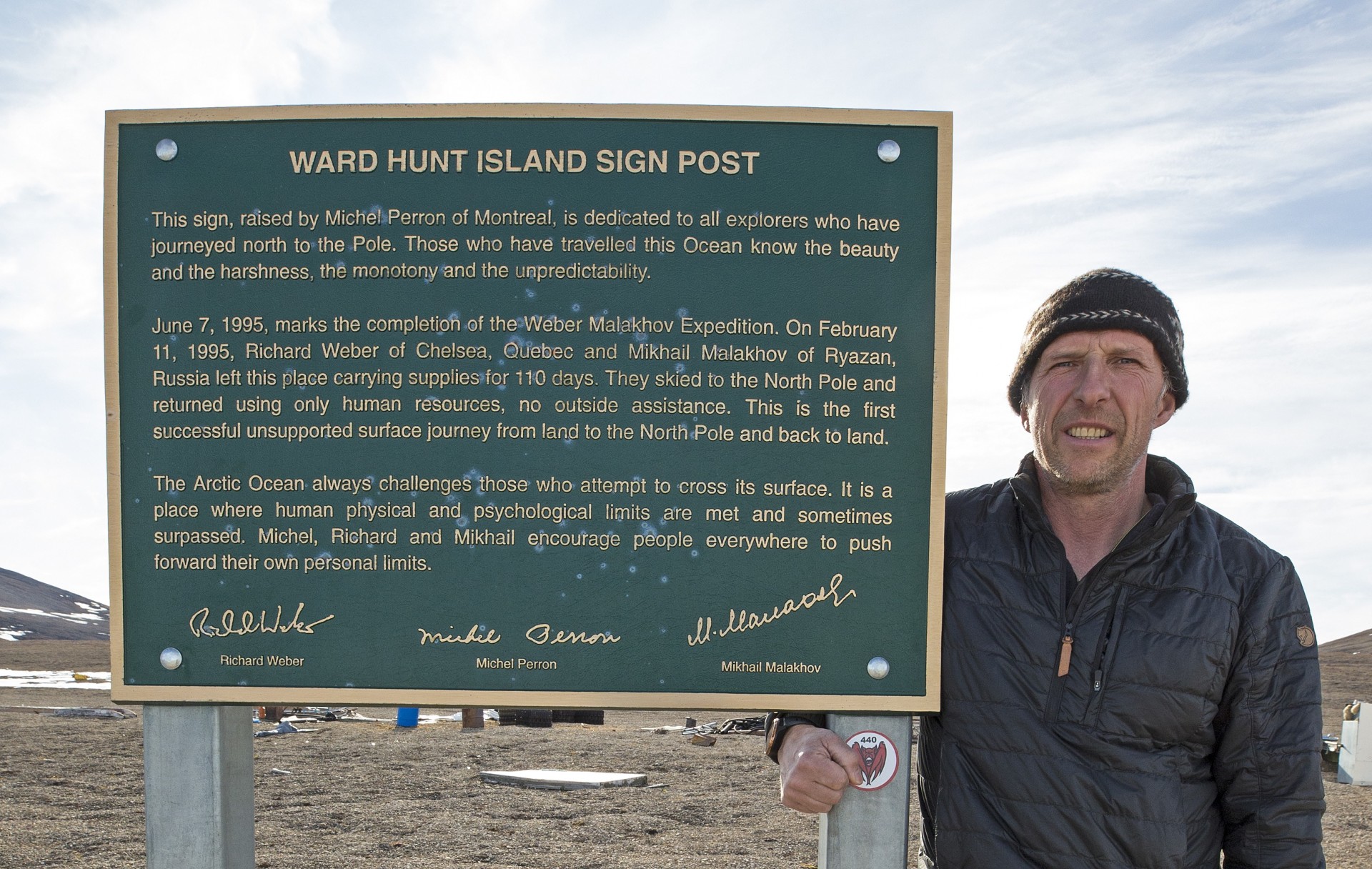
We walk over to a sign which commemorates Richard and Misha on their 1995 expedition as the first, and to this day the only, to make a return journey to the North Pole unsupported. For Richard, returning to the familiar sights of Ward Hunt was a special experience to share and one to remember. Looking out to the North Pole, the group contemplates that in this moment, of the nine million people on the planet, we are likely to be the most northerly people in the world. A sobering thought.
At the top of the world, with only a harsh expanse of ice and snow beyond, the journey turns southeast, flying over Cape Columbia to Fort Conger and across Nares Straight onto Greenland.
The above words are a just a sample of the group’s multi-day adventure around the High Arctic, a custom trip developed on request for a return guest to Arctic Watch. Don’t hesitate to get in touch to chat about adding a custom experience or including a charter flight to your Arctic Watch adventure. We are always motivated to ensure your Arctic adventure is a trip of a lifetime.
We understand that booking a trip like this is a big endeavour. Please reach out to us with any questions that you might have regarding your upcoming adventure.